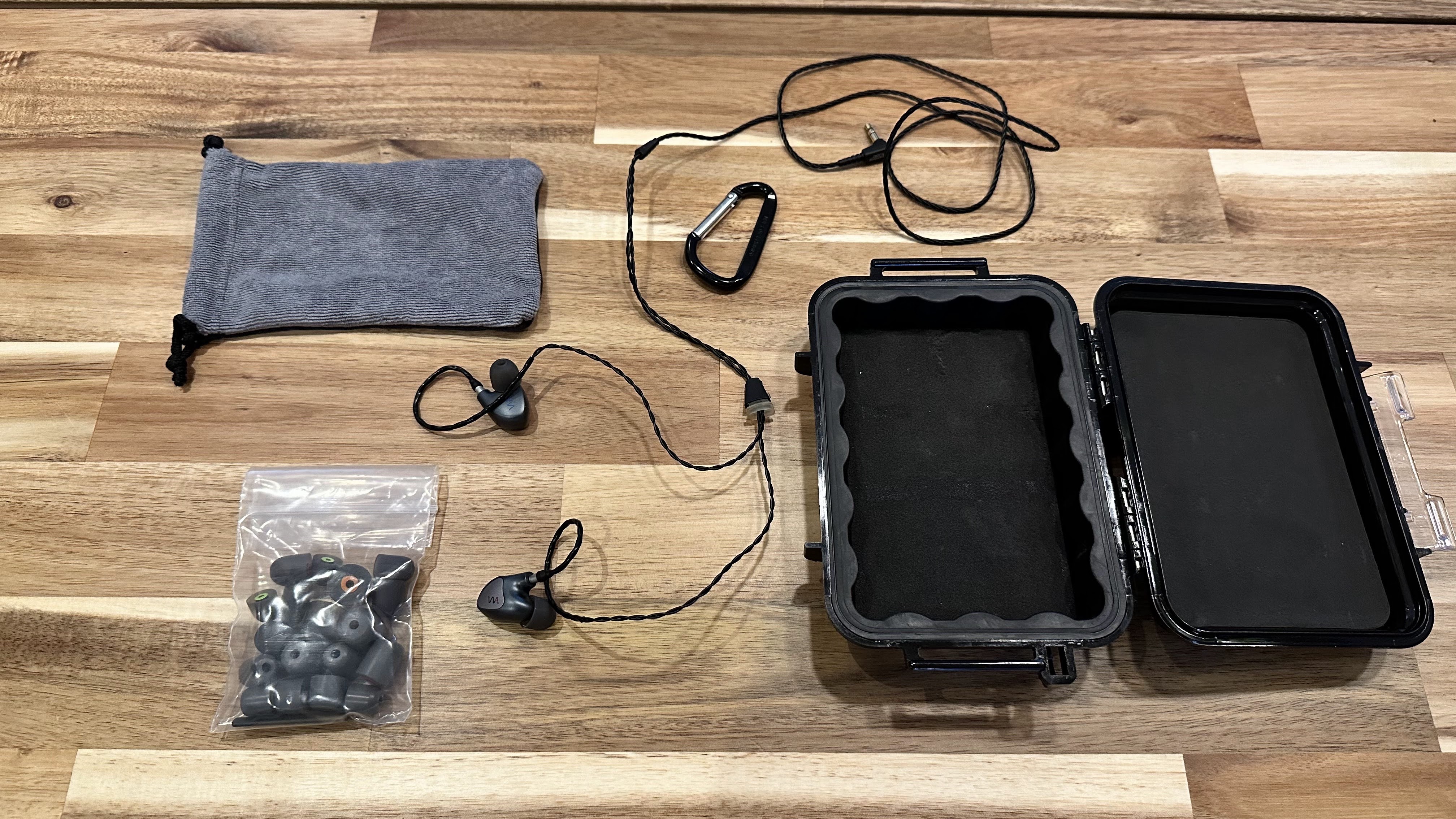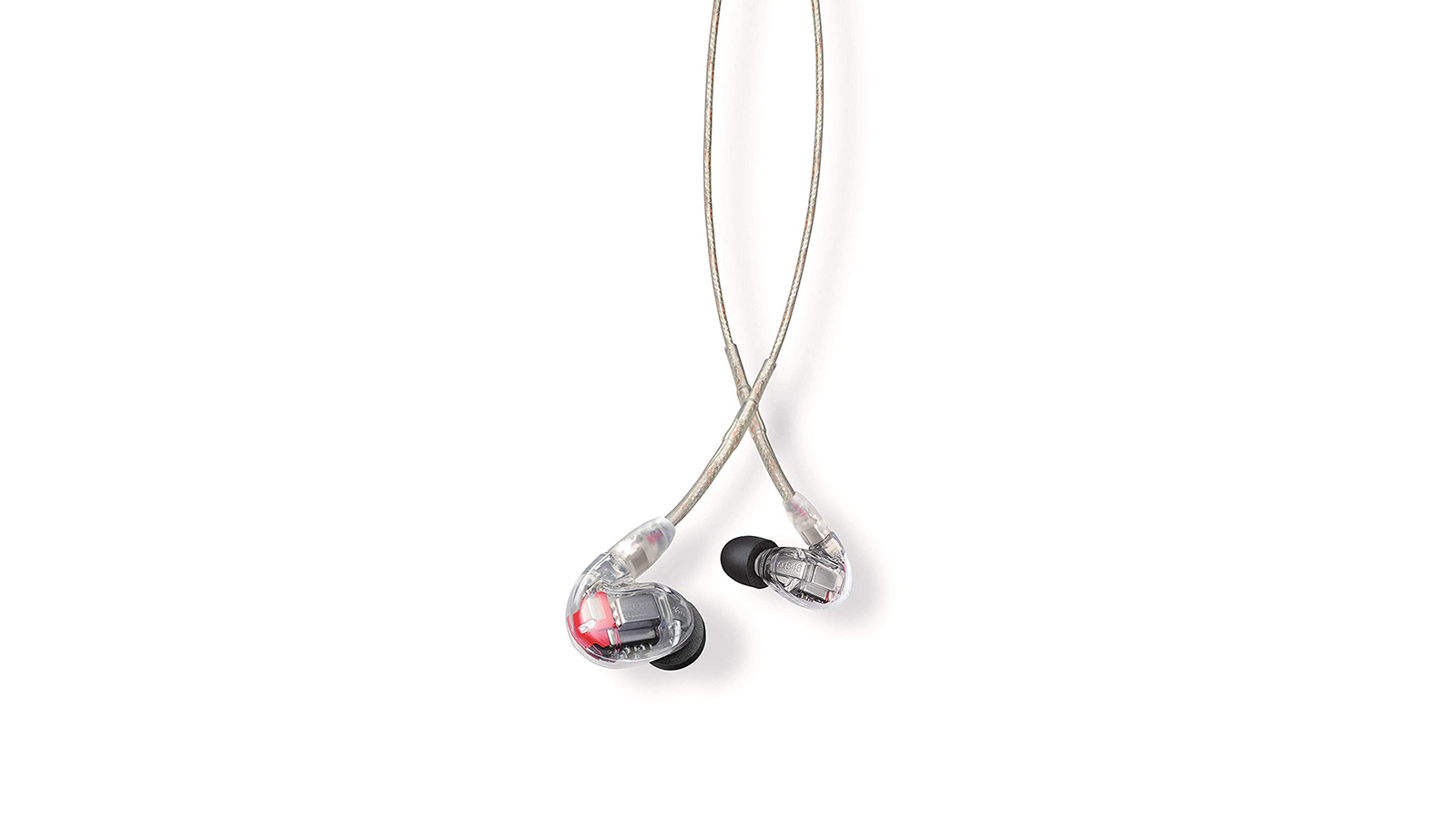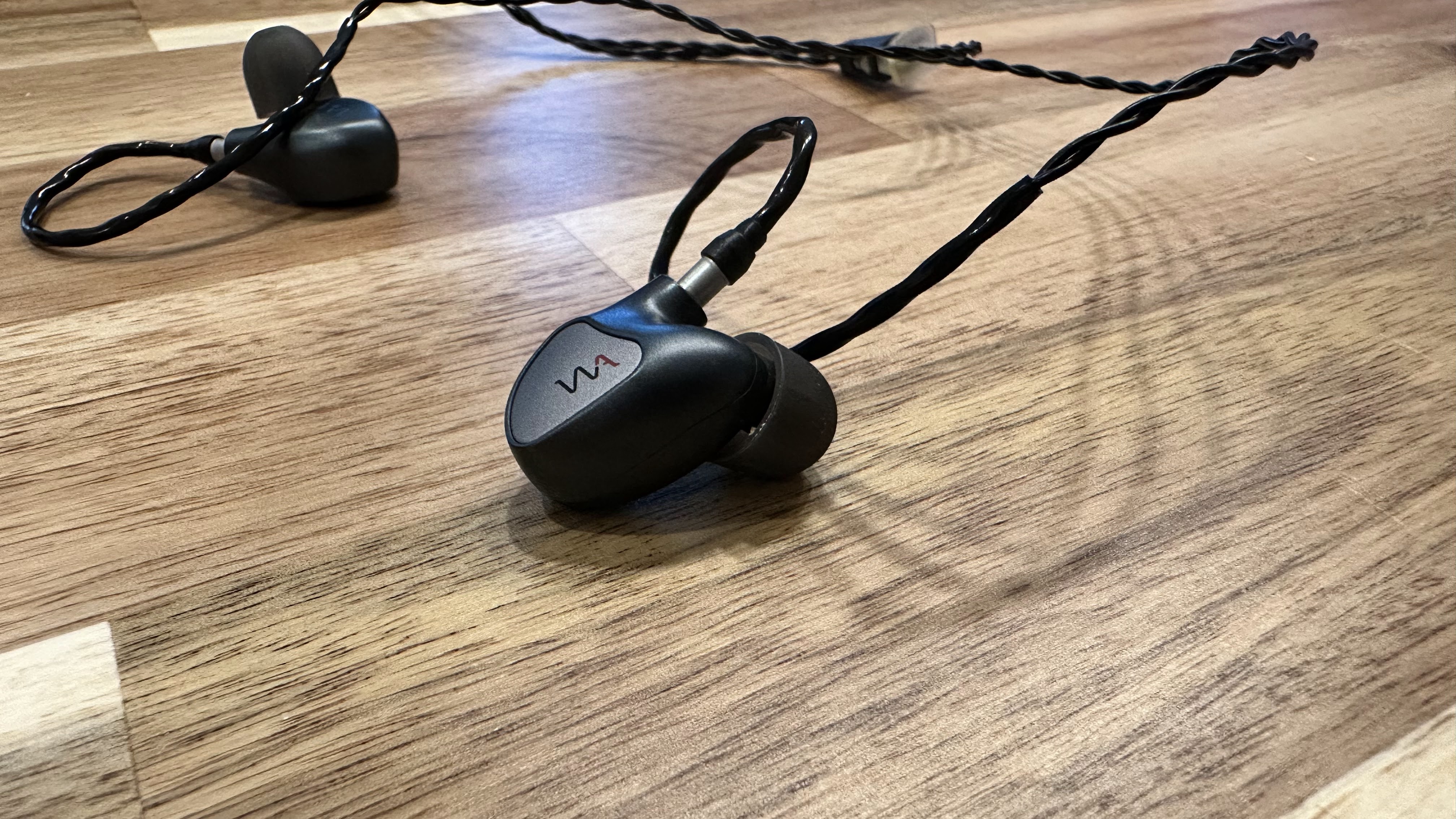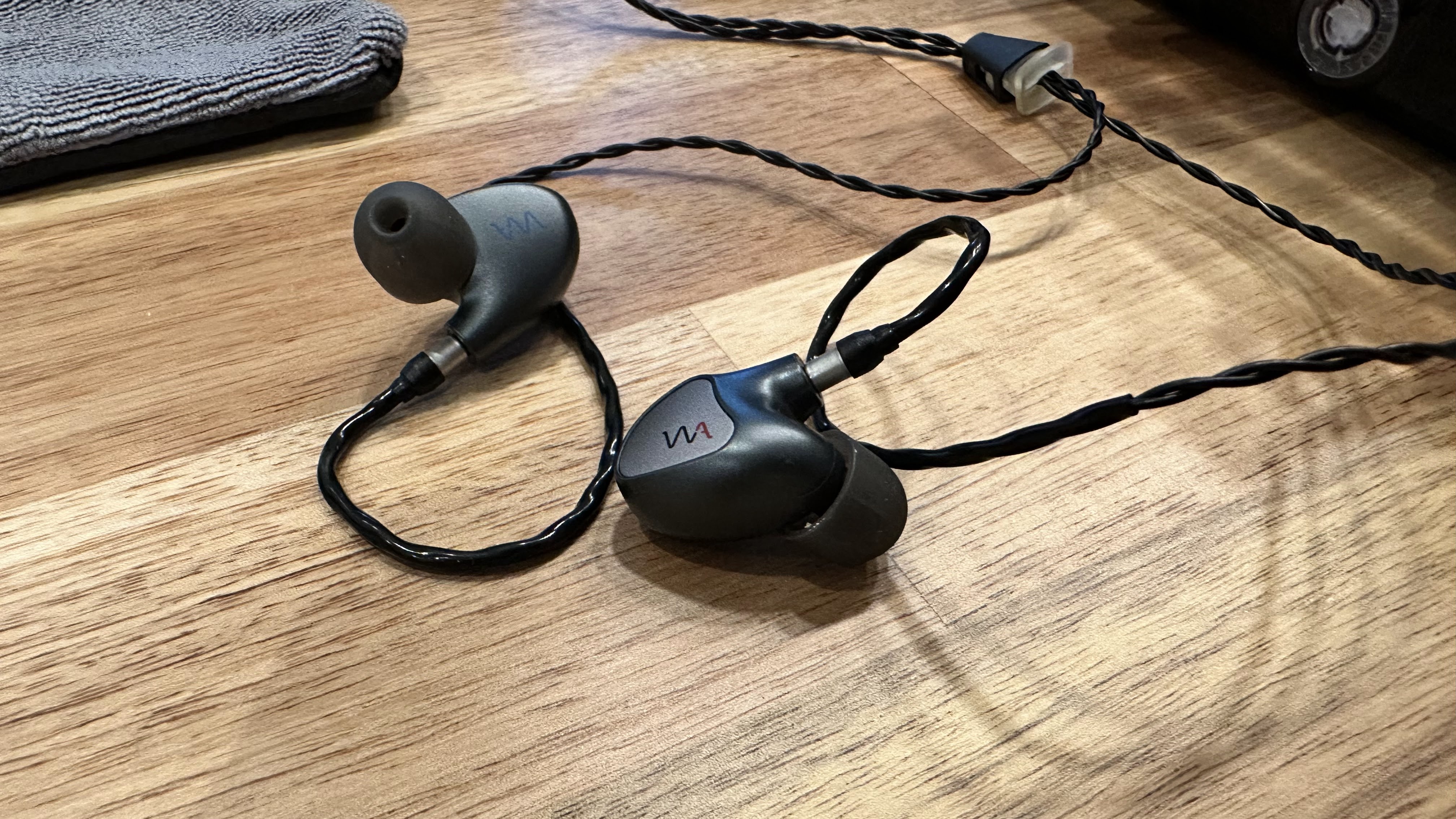MusicRadar Verdict
There’s a lot to like about the Westone Audio Mach 60 set. Comfort, accuracy and versatility combine to serve up a high performing overall package.
Pros
- +
Unobtrusive design
- +
Superb sound isolation
- +
Practical accessories
Cons
- -
Not the most exciting visually
- -
Competing against some big names in this price bracket
MusicRadar's got your back
Westone Audio Mach 60 review: What is it?
Choosing a set of in-ear monitors isn’t something we tend to do all that often. This is because they tend to come in fairly pricey, but also because they’re different to consumer earphones by virtue of the fact they’re professional tools. They won’t need to be swapped in a year when you change phone brands, for example. When you commit to a new set of IEMs, you need to be sure they’re right for you. This is why a lot is riding on the Westone Audio Mach 60 IEMs that landed on our desk recently.
Essentially, if you’re looking for something to replace your AirPods, the Mach 60 set isn’t for you. If you’re a serious producer, or musician, on the other hand, and need a solid, reliable set of high-class in-ear monitors to ply your trade, then these may be of great use to you. The Mach 60 packs in a six-driver design, with drivers for each frequency band, creating a soundstage where the different frequencies are separated and, as such, don’t compete with each other as they may do in lesser models. The result is more detail and accuracy in what you’re hearing, which is essential when detail and accuracy are what you’re focused on, right?
The Mach 60 comes prepared for anything and any user, with a healthy selection of additional ear tips in both foam and silicone, so you can find the size that suits you best, along with a lightweight cable and rigid carry case. Visually they’re not a lot to look at, with grey and navy blue plastic not exactly screaming visual flair, but it’s what’s inside that counts here. With that in mind, let’s take a closer look and listen at the Westone Mach 60 IEMs.
Westone Audio Mach 60 review: Performance & verdict

In testing a set of in-ear monitors, we have to do more than fire up our favourite Spotify playlist. Although, naturally, we did that as well. More important was to see how the Mach 60 set performed in a series of typical situations a producer or a musician might find themselves in. A good place to start was in a recording situation, so we set up an acoustic guitar and condenser mic, to monitor how accurate the sound was compared to what the microphone picked up. Additionally, we plugged an electric guitar direct into our audio interface to test the results of using an amp simulation app.

Shure SE846
Noble Zephyr
Audeze LCD-i3
With the acoustic guitar recording, it was immediately clear of the benefit you’ll get from using an IEM set with multiple drivers. With the various lower, mid and upper frequencies not competing for bandwidth from a smaller number of drivers, each had room to breathe and offer up a more realistic picture of what the mic was picking up. Naturally, there wasn’t a huge amount of bass being served up by the acoustic guitar, but we could see straight away how our condenser mic was adding some lovely air in the upper treble region which we may not have noticed otherwise. It doesn’t change what’s being recorded, but it does at least mean you’re getting an accurate picture when thinking about mic placement.
Additionally, we loved how the isolating nature of the ear buds - we opted for foam - meant there was no bleed from our metronome into the microphone. One less thing to worry about in the mix. We’re talking here about acoustic guitars but naturally these same principles will apply to vocals - sung or spoken - too.
With the amp sim, we were able to instantly hear the differences from a variety of speaker cabinet models, and impulse responses. We also tracked a bass guitar through the sim, and found the Mach 60s useful in being able to hear how the amp’s tone sat in the context of a wider soundstage. None of this is revolutionary, and these are all things that would have come to light when mixing through monitor speakers, but it was useful all the same to get that real-time sonic feedback.

Design-wise, the earplugs themselves are fairly nondescript. While brands like Campfire Audio have more in the way of high-end visual appeal, the Westone models can be accused of lacking a little bit of design flair. For the money - and these aren’t cheap - we would have liked a little more to get excited about than the grey/blue plastic served up, but thankfully the Mach 60s have that premium quality where it counts. Special mention, however, for the included case, which looks tough enough to stand up to a life on the road.
Overall, there’s a lot to like about the Westone Mach 60 IEMs. They’re well built, comfortable to wear for longer sessions, and customisable to a variety of ear shapes. I doubt they’ll inspire strong feelings to look at, but they certainly won’t offend anyone, and the level of quality is evident where it counts; in their performance and accuracy.
Westone Audio Mach 60 review: Hands-on demos
Audiophile Heaven
Prime Audio Reviews
Scott Uhl
Westone Audio Mach 60 review: Specification
- Type: In-ear monitors
- Frequency range: 10Hz to 20kHz
- Connection: 3.5mm jack
- Drivers: Six balanced-armature drivers
- Contact: Westone Audio
Chris Corfield is a journalist with over 12 years of experience writing for some of the music world's biggest brands including Orange Amplification, MusicRadar, Guitar World, Total Guitar and Dawsons Music. Chris loves getting nerdy about everything from guitar and bass gear, to synths, microphones, DJ gear and music production hardware.











